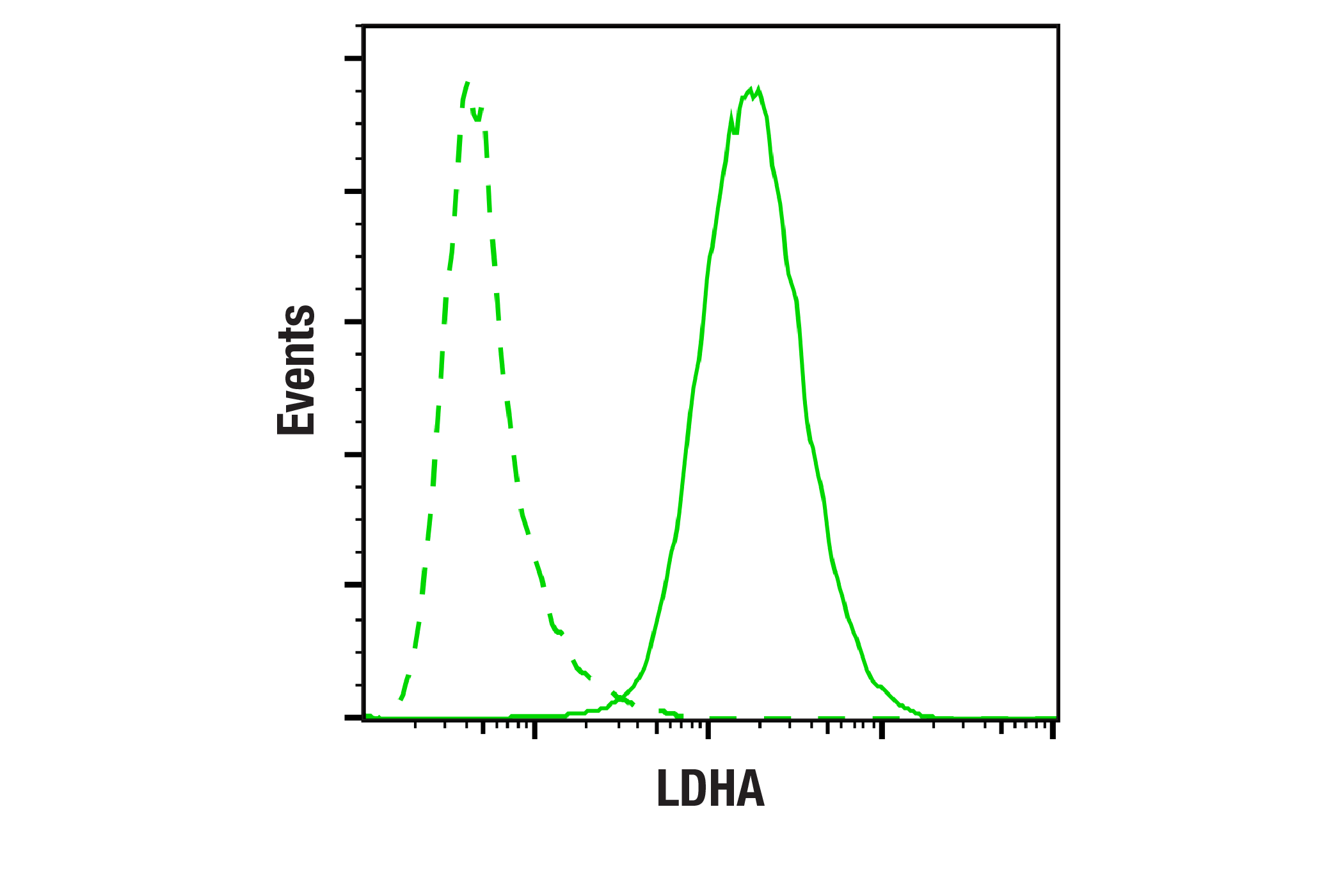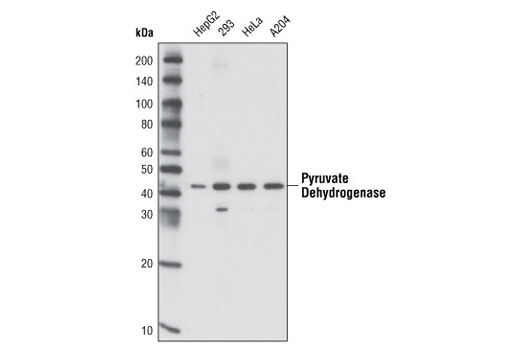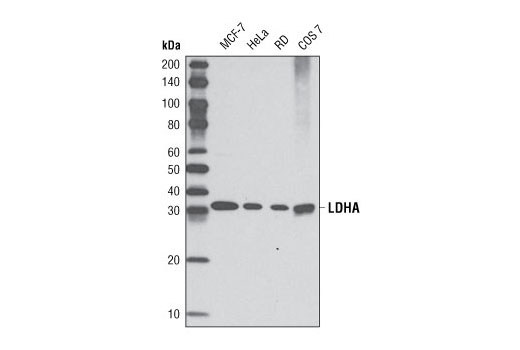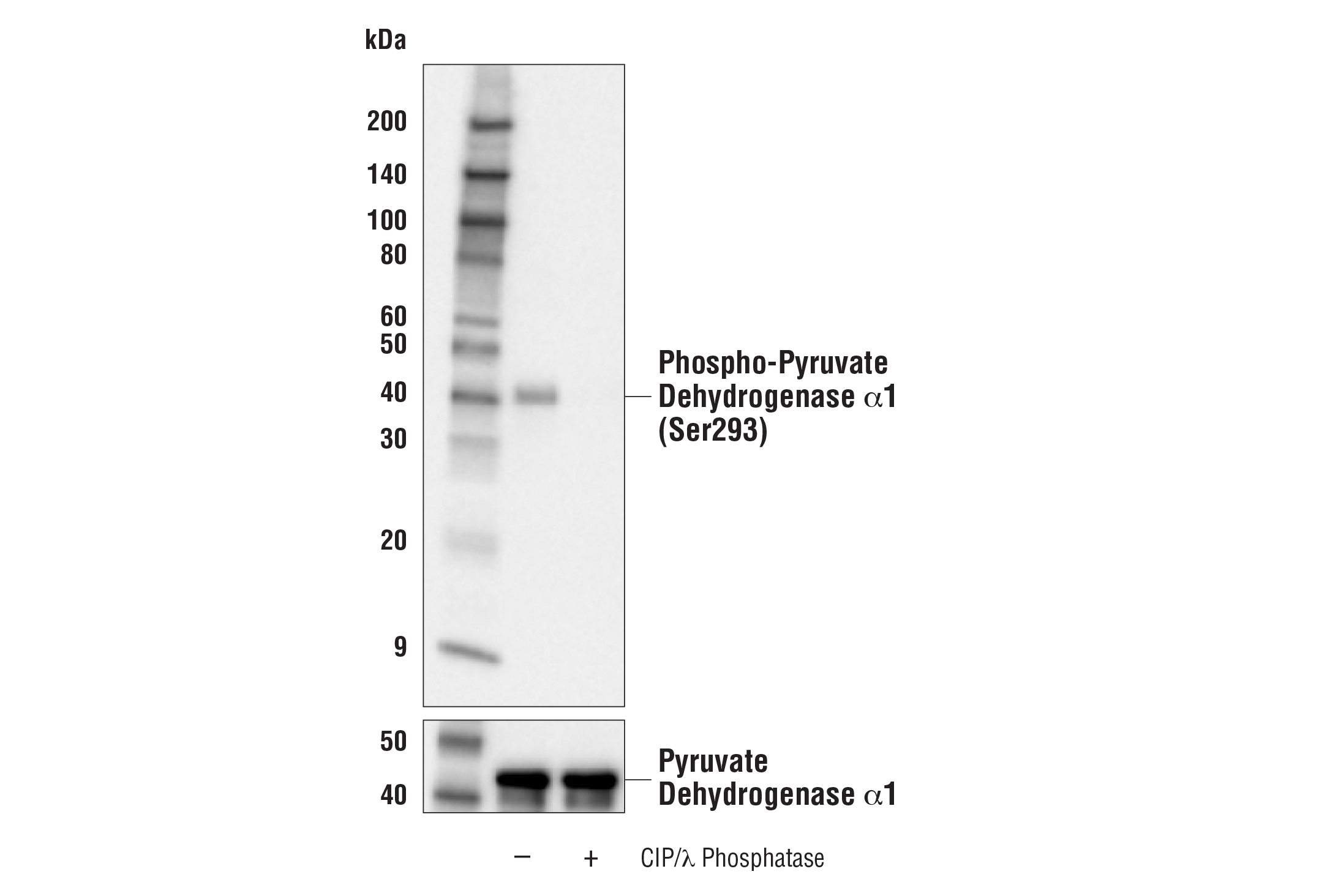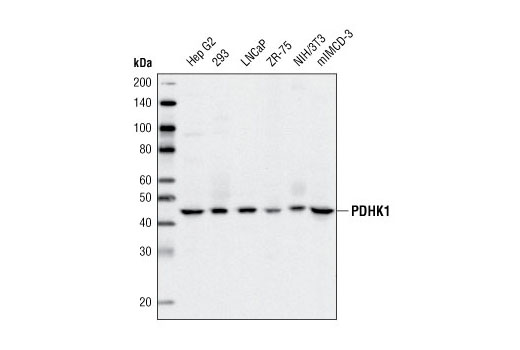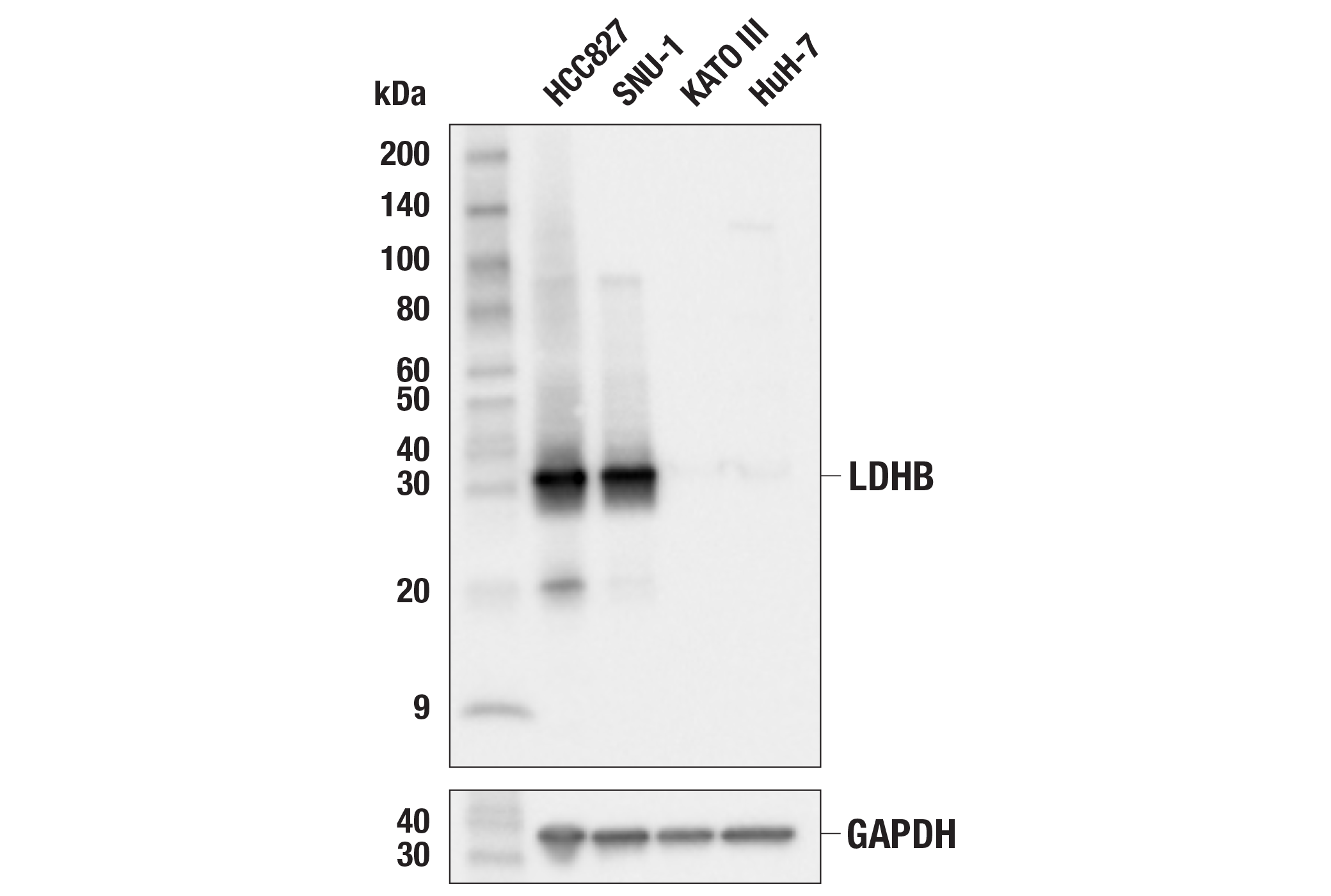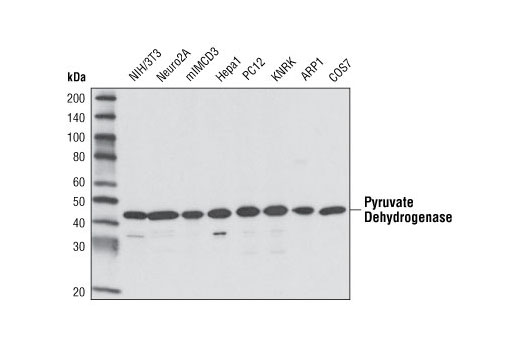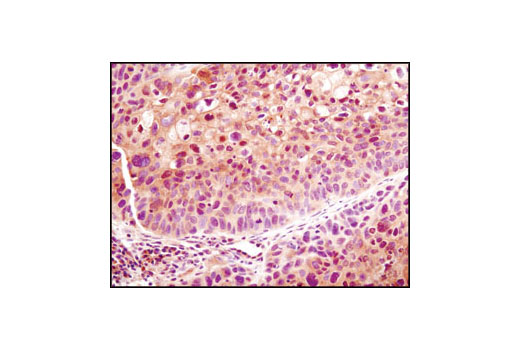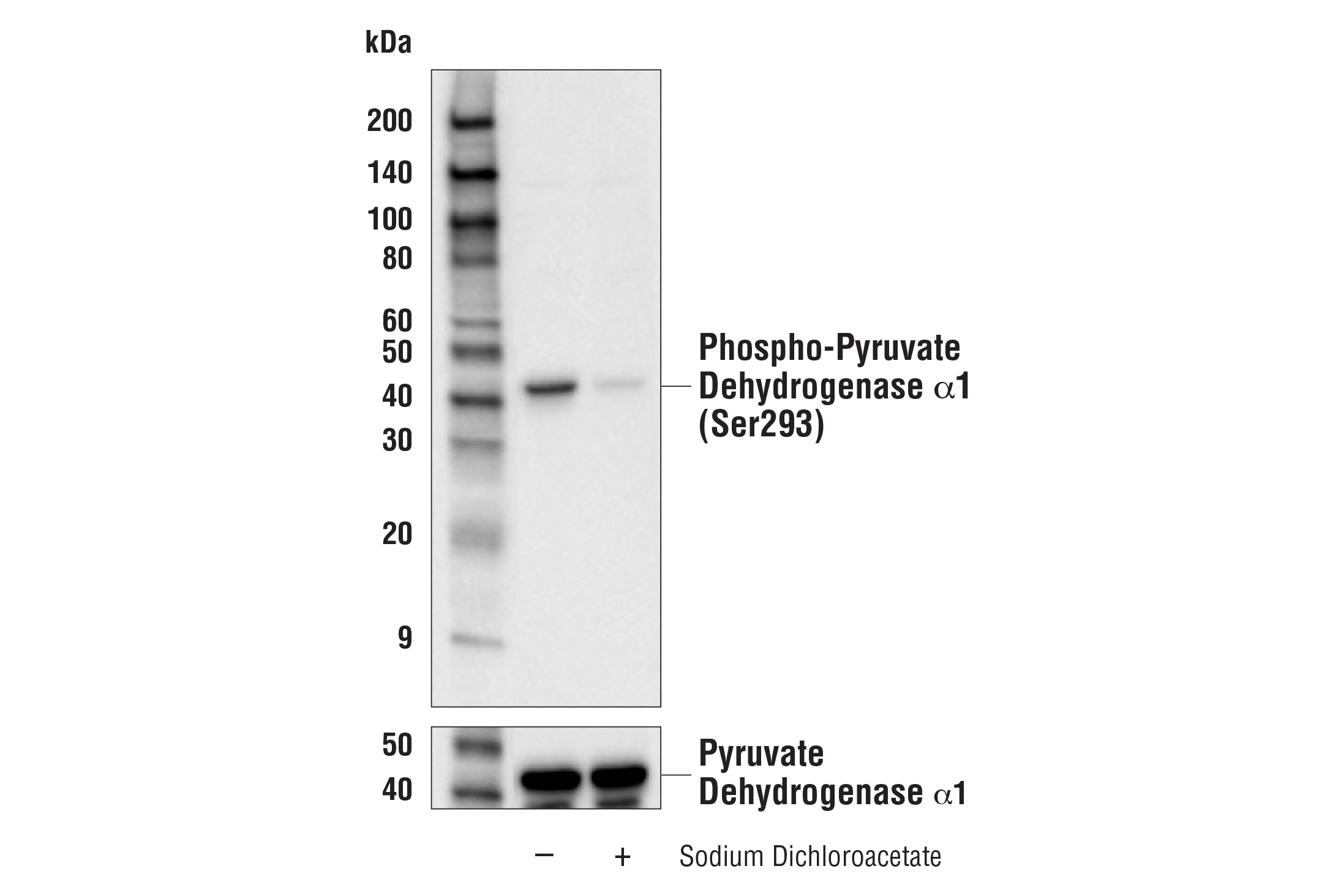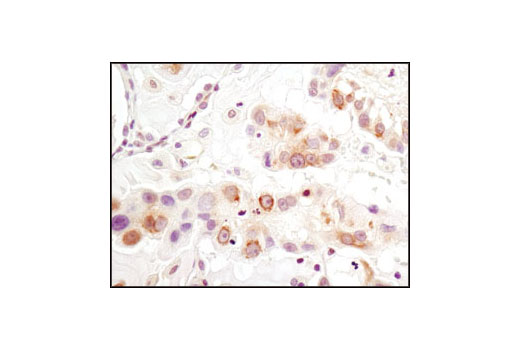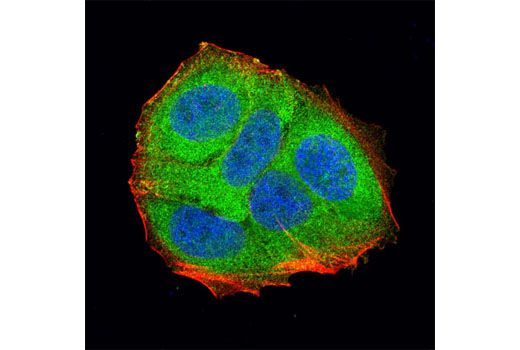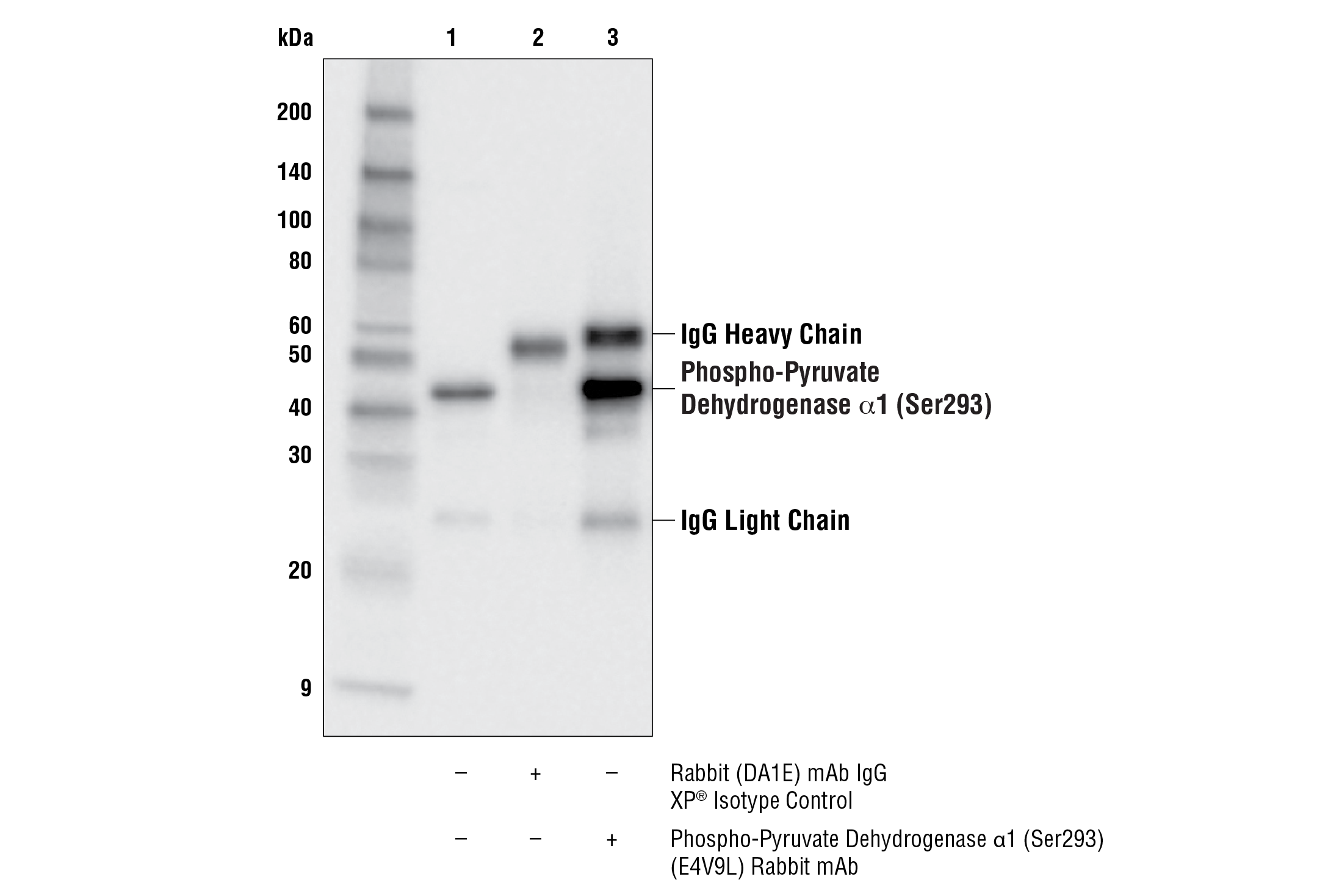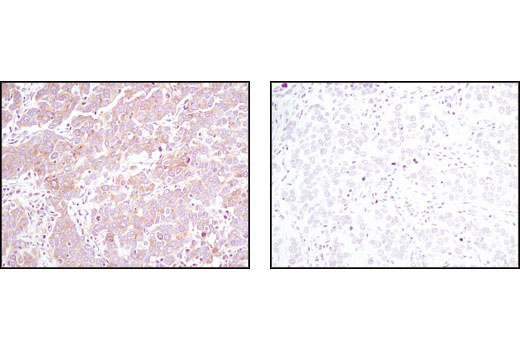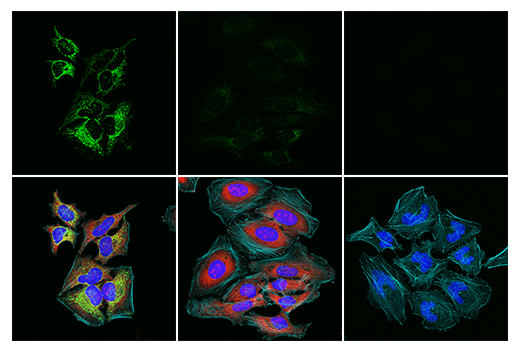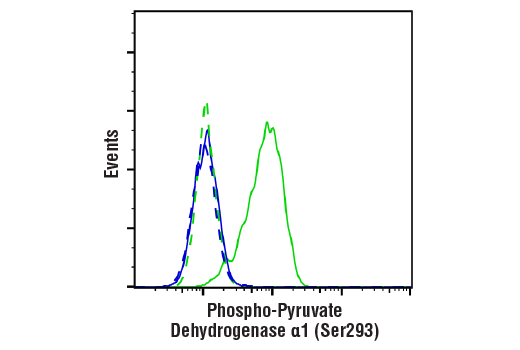| Product Includes | Product # | Quantity | Mol. Wt | Isotype/Source |
|---|---|---|---|---|
| Phospho-Pyruvate Dehydrogenase α1 (Ser293) (E4V9L) Rabbit mAb | 37115 | 20 µl | 43 kDa | Rabbit IgG |
| Pyruvate Dehydrogenase (C54G1) Rabbit mAb | 3205 | 20 µl | 43 kDa | Rabbit IgG |
| PDHK1 (C47H1) Rabbit mAb | 3820 | 20 µl | 47 kDa | Rabbit IgG |
| LDHA (C4B5) Rabbit mAb | 3582 | 20 µl | 37 kDa | Rabbit IgG |
| LDHB (E8J8T) Rabbit mAb | 56298 | 20 µl | 37 kDa | Rabbit IgG |
| Anti-rabbit IgG, HRP-linked Antibody | 7074 | 100 µl | Goat |
Please visit cellsignal.com for individual component applications, species cross-reactivity, dilutions, protocols, and additional product information.
Description
The Glycolysis/TCA Cycle Molecular Checkpoint Antibody Sampler Kit provides an economical means of detecting select components involved in the regulation of the connection between glycolysis and the citric acid cycle (tricarboxylic acid (TCA) cycle). The kit includes enough antibodies to perform two western blot experiments with each primary antibody.
Storage
Background
The pyruvate dehydrogenase complex catalyzes the conversion of pyruvate and CoA into acetyl-CoA and CO2 in the presence of NAD+. Acetyl-CoA then goes into the citric acid cycle (tricarboxylic acid (TCA) cycle), where it reacts with oxaloacetate to form citrate. The reaction of oxidative decarboxylation of pyruvate serves as a critical link between glycolysis and the citric acid cycle (TCA cycle). In mammalian cells, the pyruvate dehydrogenase complex is located in the mitochondrial matrix (1). This complex is composed of three enzymes: pyruvate dehydrogenase (E1), dihydrolipoamide acetyltransferase (E2), and dihydrolipoamide dehydrogenase (E3). Pyruvate dehydrogenase (E1) consists of two subunits: α and β. This enzyme catalyzes the removal of CO2 from pyruvate. Mutations in the α subunits of pyruvate dehydrogenase (E1) lead to congenital defects that are usually associated with lactic acidosis, neurodegeneration, and early death (2).
Pyruvate dehydrogenase kinase 1 (PDHK1) phosphorylates pyruvate dehydrogenase (E1) α1 subunit at Ser293 to inactivate its activity (3,4). This phosphorylation contributes to the tumor metabolic reprogramming toward glycolysis in hypoxia by inhibiting the citric acid cycle (TCA cycle) (4).
Lactate dehydrogenase (LDH) catalyzes the reversible conversion between pyruvate and lactate. LDH is a tetramer composed of various combinations of LDHA subunit and LDHB subunit to form five different isozymes. LDHA has a higher affinity for pyruvate and preferentially catalyzes the conversion of pyruvate to lactate. LDHA levels are upregulated in many cancers. On the other hand, LDHB has a higher affinity for lactate and preferentially catalyzes the conversion of lactate to pyruvate, enabling cells to use lactate as a nutrient (5-7). Studies show that LDHA/LDHB deficiency suppresses glycolysis and ATP production, inhibiting STING signaling and antitumor immune responses mediated by dendritic cells (8). In addition, acetylation of LDHB inhibits its activity, reduces hepatic lactate clearance, and promotes the progression of non-alcoholic fatty liver disease (NAFLD) (9).
- Strumiło, S. (2005) Acta Biochim Pol 52, 759-64.
- Stacpoole, P.W. et al. (2003) Curr Gene Ther 3, 239-45.
- Fan, J. et al. (2014) J Biol Chem 289, 26533-26541.
- Chae, Y.C. et al. (2016) Cancer Cell 30, 257-272.
- Doherty, J.R. and Cleveland, J.L. (2013) J Clin Invest 123, 3685-92.
- Hong, S.M. et al. (2019) J Biol Chem 294, 7810-7820.
- Urbańska, K. and Orzechowski, A. (2019) Int J Mol Sci 20, 2085. doi: 10.3390/ijms20092085.
- Hu, Z. et al. (2023) J Clin Invest 133, e166031. doi: 10.1172/JCI166031.
- Wang, T. et al. (2021) J Hepatol 74, 1038-1052.
Background References
Trademarks and Patents
使用に関する制限
法的な権限を与えられたCSTの担当者が署名した書面によって別途明示的に合意された場合を除き、 CST、その関連会社または代理店が提供する製品には以下の条件が適用されます。お客様が定める条件でここに定められた条件に含まれるものを超えるもの、 または、ここに定められた条件と異なるものは、法的な権限を与えられたCSTの担当者が別途書面にて受諾した場合を除き、拒絶され、 いかなる効力も効果も有しません。
研究専用 (For Research Use Only) またはこれに類似する表示がされた製品は、 いかなる目的についても FDA または外国もしくは国内のその他の規制機関により承認、認可または許可を受けていません。 お客様は製品を診断もしくは治療目的で使用してはならず、また、製品に表示された内容に違反する方法で使用してはなりません。 CST が販売または使用許諾する製品は、エンドユーザーであるお客様に対し、使途を研究および開発のみに限定して提供されるものです。 診断、予防もしくは治療目的で製品を使用することまたは製品を再販売 (単独であるか他の製品等の一部であるかを問いません) もしくはその他の商業的利用の目的で購入することについては、CST から別途許諾を得る必要があります。 お客様は以下の事項を遵守しなければなりません。(a) CST の製品 (単独であるか他の資材と一緒であるかを問いません) を販売、使用許諾、貸与、寄付もしくはその他の態様で第三者に譲渡したり使用させたりしてはなりません。また、商用の製品を製造するために CST の製品を使用してはなりません。(b) 複製、改変、リバースエンジニアリング、逆コンパイル、 分解または他の方法により製品の構造または技術を解明しようとしてはなりません。また、 CST の製品またはサービスと競合する製品またはサービスを開発する目的で CST の製品を使用してはなりません。(c) CST の製品の商標、商号、ロゴ、特許または著作権に関する通知または表示を除去したり改変したりしてはなりません。(d) CST の製品をCST 製品販売条件(CST’s Product Terms of Sale) および該当する書面のみに従って使用しなければなりません。(e) CST の製品に関連してお客様が使用する第三者の製品またはサービスに関する使用許諾条件、 サービス提供条件またはこれに類する合意事項を遵守しなければなりません。
